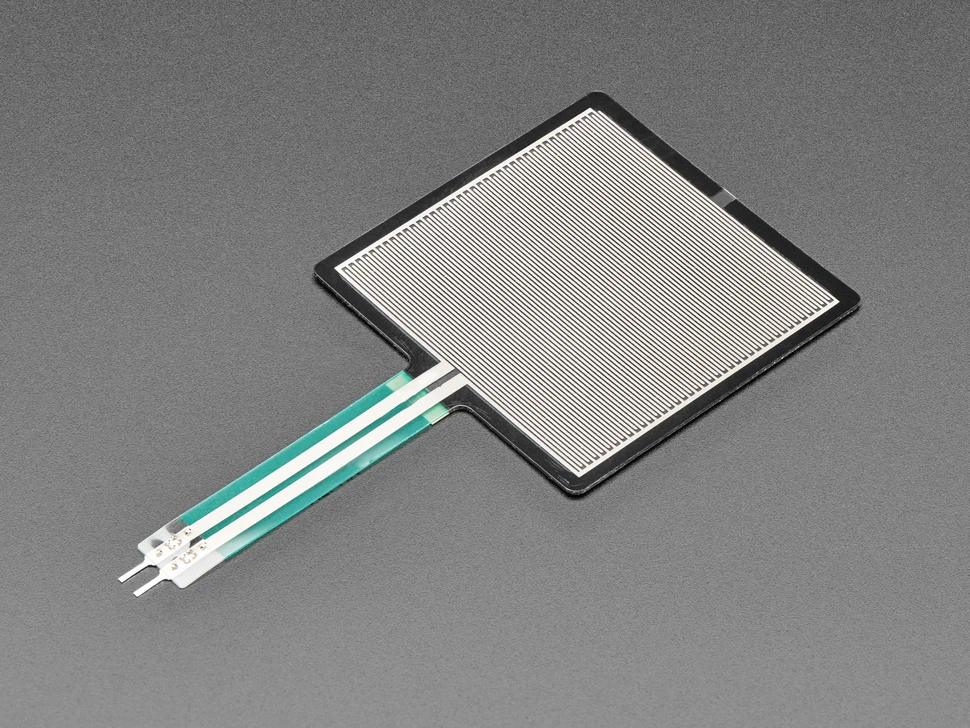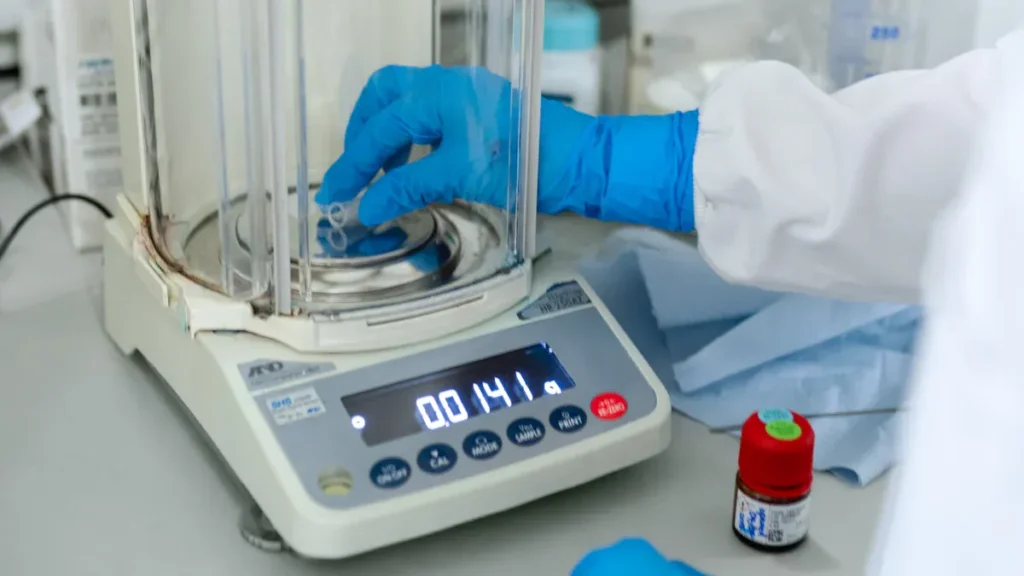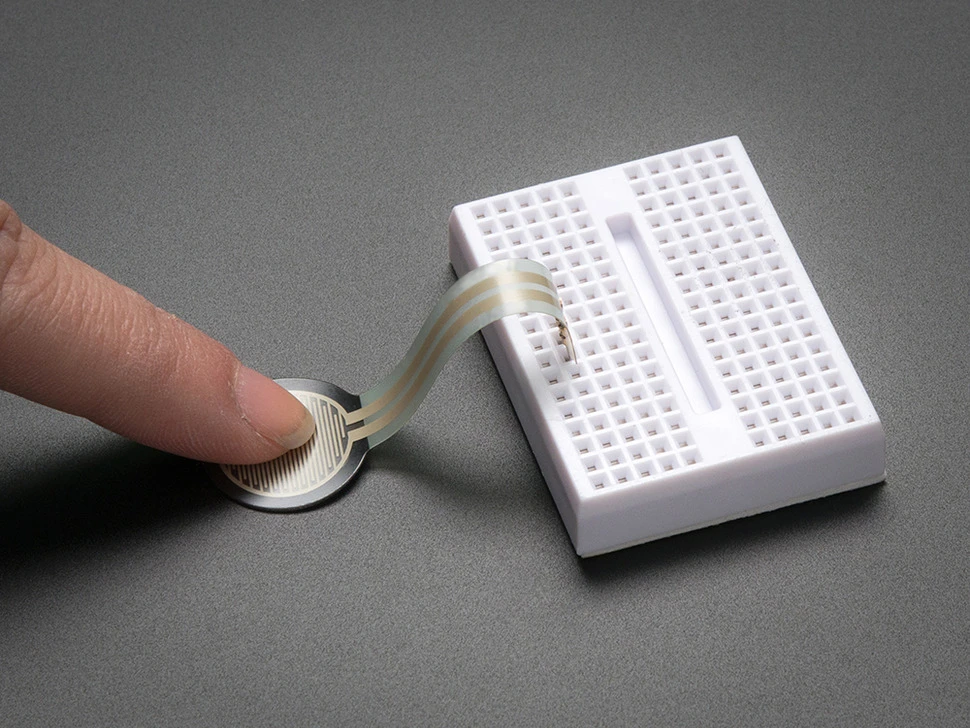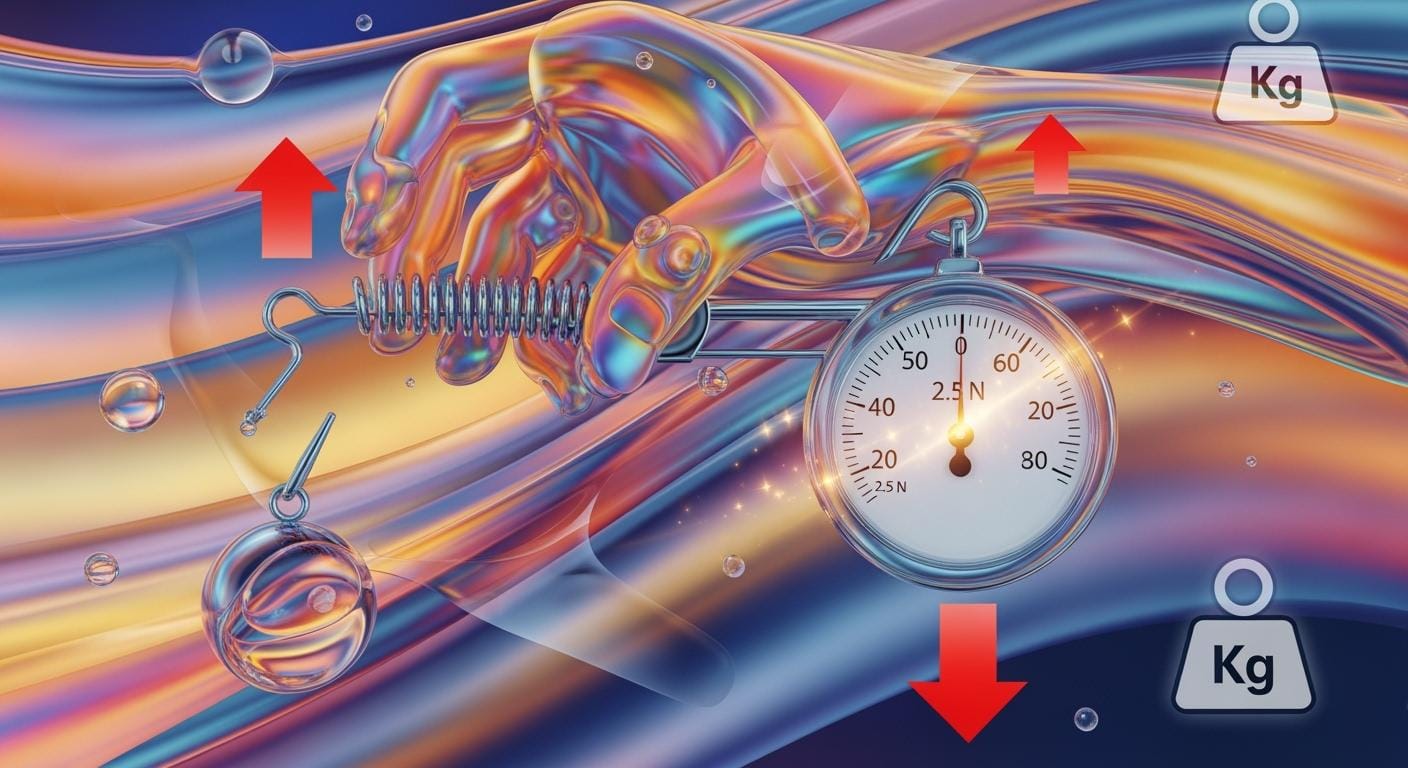Call us: +86-137-2353-4866
People find force by using the formula F = m × a. F means force, m means mass, and a means acceleration. Measuring force correctly is important in science and industry. Tools like dynamometers, load cells, and digital force gauges help measure force in many places. Portable force platforms are more accurate than older ways. Advanced tools like a force sensing resistor, such as the SOUSHINE force sensing resistor, give exact force sensing for different uses.
Table of Contents
Key Takeaways
- Force is found with the formula F = m × a. F means force, m means mass, and a means acceleration.
- Newton’s laws of motion show how forces move things. The second law helps us measure force.
- Mass tells us how much matter is in something. Mass stays the same. Weight can change if gravity changes.
- We use good tools like digital scales and accelerometers. These tools help us measure mass and acceleration well.
- SOUSHINE Force Sensing Resistors (FSRs) are special sensors. They give exact force measurements for many uses.
- We must calibrate measurement tools often. This keeps them accurate and reliable in science and industry.
- It is important to know the difference between mass and weight. This helps us measure things right in physics and engineering.
- Always check your units when you find force. This helps you avoid mistakes and get the right answer.
Force Formula
Newton’s Law
Newton’s laws of motion explain how objects move and how forces act on them. These laws form the base of classical mechanics. Scientists and engineers use these laws to understand and measure force in many situations.
Newton’s laws describe the link between force and motion. They help people predict how objects will react when a force acts on them.
- First Law (Law of Inertia): An object stays at rest or moves at a steady speed unless a force acts on it.
- Second Law: The acceleration of an object depends on the net force acting on it and its mass. This law gives the formula for force.
- Third Law: Every action has an equal and opposite reaction.
Newton’s second law is the most important for measuring force. It states that force equals mass times acceleration. This means that if someone knows the mass of an object and how fast it speeds up, they can find the force acting on it.
Equation Basics
The force formula comes from Newton’s second law. The equation looks like this:
F = m × a
- F stands for force, measured in Newtons (N).
- m stands for mass, measured in kilograms (kg).
- a stands for acceleration, measured in meters per second squared (m/s²).
This formula shows how force affects motion. If the mass of an object increases, it needs more force to reach the same acceleration. If the acceleration increases, the force also increases. For example, doubling the force will double the acceleration. Doubling the mass will cut the acceleration in half if the force stays the same.
Here is a simple table to show how changes in mass and acceleration affect force:
| Mass (kg) | Acceleration (m/s²) | Force (N) |
|---|---|---|
| 2 | 3 | 6 |
| 4 | 3 | 12 |
| 2 | 6 | 12 |
People use this formula in science labs, factories, and even sports. The unit for force, the Newton, links mass and acceleration. One Newton equals the force needed to move one kilogram at one meter per second squared.
To measure force, someone must first find the mass and acceleration. Then, they use the formula to calculate force. This process helps people understand how objects move and how much force is needed for different tasks.
Measure Mass
What Is Mass
Mass tells us how much matter is in something. Scientists use mass to compare objects. They find out how much material each object has. Mass does not change if you move the object. For example, a rock has the same mass on Earth and on the Moon. Mass shows how hard it is to change an object’s motion.
Mass always stays the same, but weight changes with gravity.
We measure mass in kilograms or pounds. Many people mix up mass and weight. They are different things. Weight depends on gravity, but mass does not. Mass is compared to a standard, like a one-kilogram block.
Tools for Mass
Scientists and engineers use many tools to measure mass. Each tool gives a different level of accuracy.
Balance
A balance compares an object’s mass to a known mass. The main types are beam balances and digital balances. Beam balances use levers and weights. Digital balances use sensors for quick readings.
- Balances are used most in labs to measure mass.
- Beam balances are good for schools and simple labs.
- Digital balances are fast and give accurate results.
- Force restoration balances are very precise, even one part in ten million.
- Load cell instruments use sensors for high precision, often in factories.
- Vibrating tube mass sensors measure tiny masses in fluids, helpful in biology and chemistry.
- Mass spectrometers measure very small masses, mostly in chemistry.
| Tool Type | Precision Level | Reliability Features |
|---|---|---|
| Industrial Scales | High | Work well in tough places |
| Load Cells | High | Use smart software to collect data |
| Micropipettes | Very High | Give many digits, but need careful use |
| Calipers | Moderate | Good for engine parts |
Tools must be both accurate and precise. Bad readings can cause problems in factories and labs. Reliable tools help people get the same results every time.
SOUSHINE Digital Scale
The SOUSHINE Digital Scale uses smart sensors to measure mass fast and accurately. It works well in labs, schools, and factories. The digital screen shows the mass in clear numbers. This makes it easy to read. The SOUSHINE Digital Scale is very precise and helps users avoid mistakes.
Calibrating often and using the scale carefully keeps it accurate.
Some errors come from bad equipment, poor care, or changes in the environment. Users should keep the area clean and check the scale often. This helps stop mistakes and gives good results.
To measure mass, put the object on the SOUSHINE Digital Scale. Read the number on the screen. This way gives a direct and accurate measurement. It is important for science, factories, and everyday life.
Measure Acceleration
What Is Acceleration
Acceleration means how fast something changes its speed or direction. Scientists use acceleration to learn about how things move. When something speeds up, slows down, or turns, it is accelerating. The unit for acceleration is meters per second squared (m/s²). Gravity makes things speed up when they fall. For example, a ball dropped from high up will go faster as it falls.
Force and mass both affect acceleration. If you push a cart, it will move faster. A heavier cart needs more force to speed up. Acceleration helps us know how things move in sports, cars, and space.
Acceleration tells us how motion changes. It helps us guess what will happen when a force is used.
Scientists use acceleration to test ideas in physics. They measure it to learn about gravity, friction, and other forces. Acceleration is important in many experiments and in real life.
Tools for Acceleration
Accelerometer
An accelerometer is a tool that measures acceleration. It can tell when speed or direction changes. Accelerometers use special sensors to sense both still and moving acceleration. Still acceleration comes from gravity. Moving acceleration comes from things like shaking or quick moves.
Accelerometers measure in meters per second squared or G-forces. One G-force is the same as 9.8 m/s². These sensors can track movement in three directions. This means they can measure motion any way you move. Accelerometers work by feeling movement inside the tool. When something moves, the sensor makes an electric signal. This signal shows how much acceleration there is.
There are different kinds of accelerometers. Piezoelectric ones measure shakes and bumps. Capacitive ones are found in phones. How well an accelerometer works depends on how it is made and used. Some are better for certain jobs. For example, piezoelectric types are good for quick changes. Capacitive types are good for steady movement.
Accelerometers help people study movement in cars, planes, and robots. They also help in sports and health tools. Scientists use them to get data for experiments.
| Experiment Type | Description |
|---|---|
| Dropping an Object | Time how long a block takes to fall from one meter to find acceleration from gravity. |
| Slo-mo Free Fall | Watch a slow video of a ball dropping to see how far it goes over time. |
| Leveling a Ramp | Use a ramp to show steady acceleration and figure it out from the ramp’s angle. |
These experiments help students learn about acceleration. They show how force and mass change acceleration.

SOUSHINE Sensor
SOUSHINE sensors measure acceleration in many ways. These sensors use new technology to sense movement in three directions. SOUSHINE sensors help track how things move and which way they face. They work by feeling movement and turning it into electric signals.
SOUSHINE sensors are used in cars, robots, and health tools. They help measure acceleration for safety and performance. Scientists use SOUSHINE sensors to get data in tests. These sensors give good and steady measurements.
- Research on IMU reliability looks at joint angles and timing. This may not show everything SOUSHINE sensors can do.
- There is not much research on how well IMUs measure acceleration, which matters for SOUSHINE sensors.
- People wonder if non-experts can use IMUs and still get good data.
SOUSHINE sensors are a good way to measure acceleration. They help people see how force and mass change movement. With SOUSHINE sensors, scientists and engineers can study acceleration in many areas.
Calculate Force
Using the Formula
To find force, people use a simple process. This process uses Newton’s second law. The formula links force, mass, and acceleration. Here are the steps:
- Know that force equals mass times acceleration.
- Use a balance or digital scale to measure mass.
- Use an accelerometer or sensor to measure acceleration.
- Multiply mass and acceleration to get force.
This way helps students, engineers, and scientists measure force. For example, a student can measure a ball’s mass. Then, they use a sensor to find its acceleration. After that, they multiply to get the force when the ball moves. This method works in labs, factories, and sports.
Tip: Always use the same units for mass and acceleration. This keeps your answer correct.
Calculator Tips
Calculator tools help people measure force more easily. These tools give fast and accurate answers. They also help people learn how force works. The table below shows how calculator tools help:
| Benefit | Description |
|---|---|
| Accuracy | Gives exact answers using Newton’s Second Law. |
| Educational Support | Helps users learn with clear calculations. |
| Efficiency | Saves time and lowers mistakes by doing the math. |
| Versatility | Works with many units and in different areas, like sports or engineering. |
Many people use calculators to find force:
- Students do homework or check their answers.
- Teachers show Newton’s law in class.
- Engineers study forces in machines or buildings.
- Athletes and coaches measure force in sports.
When using a calculator, people should watch out for mistakes:
- Overconfidence Trap: Some people think their answer is right without checking. Double-checking helps find small mistakes.
- Making Assumptions: Rushing can cause wrong ideas about the problem. Reading questions and diagrams carefully helps avoid this.
- Overcomplicating Solutions: Some people use hard steps. Using simple steps often gives the right answer.
Note: Check each step and use the right units. This helps you avoid mistakes and get the correct force.
People who measure force should always check their work. Using good tools and following each step helps get the best results.
Tools to Measure Force

Spring Scale
A spring scale is a simple tool for measuring force. It works by stretching a spring when you hang something on it. The stretch shows how much force is used. This follows Hooke’s Law, which says the stretch matches the weight. The dial or pointer tells you the force value. People use spring scales for small loads and liquids. These tools are easy to carry and use, but they are not the most accurate.
- The spring gets longer when you add a load.
- The pointer moves and shows the force on the scale.
- This tool works best for small things.
Spring scales help students learn about force in science class. They are good for simple experiments that do not need high accuracy.

SOUSHINE FSRs
SOUSHINE Force Sensing Resistors (FSRs) are modern tools for measuring force. These sensors change their resistance when force is applied. More force makes the resistance go down. This lets you measure force all the time, not just on or off.
SOUSHINE FSRs have many features:
| Feature | Description |
|---|---|
| Customizable Shapes and Sizes | FSRs can be made in many shapes and sizes for different uses. |
| Durability and Reliability | They last a long time, even with lots of use. |
| Low Power Consumption | They are good for saving energy in devices. |
| Ease of Integration | They are easy to add to many products and systems. |
These sensors can find very small forces, starting at 0.1 newtons. They react fast to changes. SOUSHINE FSRs are used in robots, touch controls, cars, health equipment, and factories. In cars, they help with seat sensors. In health care, they check pressure points. In robots, they help with touch sensing.
SOUSHINE FSRs are better than other tools for being precise and tough. The table below shows how they compare:
| Feature | SOUSHINE’s FSRs | Other FSRs |
|---|---|---|
| Accuracy | Superior | Varies |
| Durability | High | Moderate |
| Power Use | Low | Varies |
SOUSHINE FSRs help engineers and scientists measure force in many areas. Their flexibility and strength make them a great choice for new uses.
Torque Tester
A torque tester measures twisting force called torque. This tool is important in car, plane, electronics, and medical jobs. Workers use torque testers to check how tight bolts and caps are.
| Application Type | Industries Involved |
|---|---|
| Precision Torque Testing | Automotive, Aerospace, Electronics, Medical |
| Cap Torque Testing | Food, Medical, Non-food |
Torque testers give accurate results for both small and big forces. They help keep products safe and working well. People use them to check if machines and tools are working right.
Comparing Force Measurement Tools
The table below shows the main tools for measuring force and what they do:
| Tool Type | Description | Applications |
|---|---|---|
| Analog Force Gauges | Simple, cheap gauges for basic readings. | Pull and compression tests. |
| Digital Force Gauges | Very accurate, fast, and good for data checks. | Advanced tests and research. |
| Load Cells | Turns force into signals, very exact. | Factory scales, test machines. |
| Spring Scales | Measures force by stretching a spring, easy to carry. | Small loads, liquids, classroom use. |
| SOUSHINE FSRs | Measures force by changing resistance, strong and precise. | Cars, health care, robots, automation. |
Each tool has its own strengths. Spring scales are easy and portable. SOUSHINE FSRs are very precise and work in many jobs. Torque testers measure twisting force. Picking the right tool depends on the job and how exact you need to be.
Measuring Small Masses and Forces
Precision Tools
Scientists use special tools to measure tiny masses and forces. These tools help them get exact results in labs and factories. SOUSHINE Force Sensing Resistors (FSRs) work well for light touches and small pressures. Their design lets them sense force changes very fast. Engineers use SOUSHINE FSRs in robots, health care, and electronics to measure small forces.
NIST made a very accurate way to measure force using a weak laser beam. This method uses two optical cavities. The system checks how much a sensor moves when the laser pushes it. This technique works for very tiny forces, like micronewtons or femtonewtons. Regular metal weights cannot measure such small amounts. Scientists use these devices for laser jobs and portable balances. Small laser power meters also help measure force in real time, making science tools more exact.
Scientists pick the best tool based on the size of the force or mass they need to measure. For very tiny values, they use sensors and laser systems.
| Tool Name | Main Use | Range of Measurement |
|---|---|---|
| SOUSHINE FSRs | Detecting small forces | 0.1 N and up |
| NIST Laser System | Measuring tiny forces and mass | Micronewton to femtonewton |
| Digital Microbalance | Weighing small samples | Microgram to milligram |
Measuring tiny masses and forces means picking the right tool. Each tool is good for different jobs.
Calibration
Calibration makes sure tools give correct results. Scientists test their tools and compare them with a trusted standard. They look for differences and fix the tool if needed. This helps keep measurements right.
The Morehouse SDM is a machine for calibrating small force tools. It uses deadweights and collects data automatically. The SDM does not need people to move weights by hand and gives very accurate calibration. Special adapters help guide force and remove tare weight problems. Operators can make custom test profiles, which makes calibration easier.
Regular calibration keeps tools working well and gives correct results.
- Old ways of calibration take longer and can cause mistakes.
- The SDM is more accurate because it checks many things that affect force measurement.
- One person can run several machines, so work goes faster.
- Calibration uses many tools, from small gauges to big machines.
- Adapters help apply force the right way during calibration.
- Load cells need regular calibration to stay accurate.
Scientists and engineers depend on calibration for measuring tiny masses and forces. They check their tools often and follow good steps. This helps them get reliable data for important jobs.
Units and Conversions
Newtons
Scientists use the newton to measure force. The newton is part of the International System of Units (SI). One newton is the force needed to make a one-kilogram mass speed up by one meter per second squared. This helps people see how force works in science and daily life.
The newton links mass, length, and time. It shows how force changes how things move.
The table below shows how the newton matches with other main units:
| Unit | Symbol | Definition |
|---|---|---|
| Force | N | The force needed to speed up 1 kg by 1 m/s² |
| Mass | kg | The main unit for mass in the SI system |
| Length | m | The main unit for length in the SI system |
| Time | s | The main unit for time in the SI system |
| Relationship | – | 1 N = 1 kg·m/s² |
People use newtons in physics, engineering, and everyday tasks. For example, if you push a box, the force you use is measured in newtons. This makes it easy to compare different forces.
Other Units
Force can be measured in other units too. Some places use pounds-force or dynes. These units help people work with different systems or old tools.
The table below shows how to change newtons to other units:
| Unit | Conversion Factor to Newtons |
|---|---|
| 1 pound-force | 4.4482216152605 N |
| 1 N | 0.2248089430997105 lbf |
| 1 N | 100000 dyn |
- One pound-force is about 4.45 newtons.
- One newton is 100,000 dynes.
- People in the United States use pounds-force to measure weight.
- Dynes are used in physics for very small forces.
Tip: Always check which unit you need before you start. Using the wrong unit can cause mistakes.
Scientists and engineers often change between units. They use conversion factors to keep their answers correct. Knowing how to switch between newtons, pounds-force, and dynes helps people solve many problems.
Mass vs. Weight

Definitions
Mass and weight describe different properties of objects. Mass measures the amount of matter in an object. It does not change, no matter where the object is. Weight measures the pull of the force of gravity on that object. Weight can change if the object moves to a place with a different force of gravity.
- Mass is measured in kilograms (kg).
- Weight is measured in newtons (N).
A table can help show the difference:
| Property | Mass | Weight |
|---|---|---|
| What it measures | Amount of matter | Pull of gravity |
| Unit | Kilogram (kg) | Newton (N) |
| Changes with location? | No | Yes |
For example, an astronaut has the same mass on Earth and on the Moon. The astronaut’s weight is less on the Moon because the force of gravity is weaker there. This shows that mass stays the same, but weight depends on the force of gravity.
Mass is always constant, but weight changes with the force of gravity.
The formula for weight is:
Weight = Mass × Acceleration due to Gravity
A person with a mass of 68 kg has a weight of about 667 newtons on Earth. On the Moon, the same person weighs much less because the force of gravity is weaker.
Gravity’s Role
Gravity affects weight but not mass. The force of gravity pulls objects toward the center of a planet. This pull gives objects their weight. Mass stays the same because it only counts the matter in the object.
When the force of gravity changes, weight changes too. For example, a rock with a mass of one kilogram weighs about 9.81 newtons on Earth. On Mars, the same rock weighs less because Mars has a weaker force of gravity. On Saturn, the rock weighs more because the force of gravity is stronger.
- The force of gravity on the Moon is about one-sixth of Earth’s.
- Objects weigh less on the Moon, but their mass does not change.
A list can help show how gravity changes weight:
- Find the mass of the object.
- Multiply the mass by the local force of gravity.
- The answer is the weight.
The force of gravity decides how much something weighs, but never changes its mass.
Understanding the difference between mass and weight helps in science, engineering, and daily life. People use mass to compare objects. They use weight to measure the pull of gravity in different places.
To measure force, someone needs to find the mass first. Next, they record the acceleration. These numbers are used to figure out the force. Using the right tool, such as SOUSHINE FSRs, makes results better and more reliable. People should check their units every time. Mass and weight are different things.
For better results, pick the best sensor. Use a reference part for checks. Recalibrate your tools often to keep them working well.
FAQ
What is a force sensing resistor (FSR)?
A force sensing resistor (FSR) finds force or pressure. When someone pushes on it, the resistance changes. This change helps people know how much force is used.
How does SOUSHINE FSR work?
SOUSHINE FSR has a special material inside. When force is put on it, the resistance goes down. The sensor sends an electric signal to show this change. Devices use the signal to find out the force.
Why do scientists calibrate force measurement tools?
Calibration checks if a tool gives the right results. Scientists compare the tool’s numbers to a trusted standard. This helps keep measurements correct.
What units do people use to measure force?
People mostly use newtons (N) for force. Some also use pounds-force (lbf) or dynes. The newton is the main unit in science.
Can SOUSHINE FSRs measure very small forces?
Yes. SOUSHINE FSRs can find small forces, starting at 0.1 newtons. This helps in robots, health care, and electronics.
What is the difference between mass and weight?
Mass tells how much matter is in something. Weight shows how gravity pulls on it. Mass stays the same everywhere. Weight changes when gravity changes.
Where do engineers use force measurement tools?
Engineers use these tools in cars, robots, factories, and health care. They help test safety, control machines, and check product quality.
How do people convert between newtons and pounds-force?
People use a conversion number. One pound-force is about 4.45 newtons. To change pounds-force to newtons, multiply by 4.45.


